Understanding the healing process of ear piercings is crucial for individuals considering this form of body modification. The duration of healing can vary depending on several factors, including the location of the piercing, aftercare practices, and individual factors such as overall health and healing ability. In this article, we’ll explore the typical healing times associated with different types of ear piercings, along with essential tips for promoting optimal healing and minimizing the risk of complications.
What are Ear Piercings?
Ear piercings involve puncturing the earlobe or other parts of the ear to insert jewelry for adornment and personal expression.
Types of Ear Piercings
Ear piercings offer a diverse array of options for those seeking to adorn their ears with decorative jewelry. From classic lobe piercings to more intricate cartilage and specialty piercings, each type offers its own unique aesthetic appeal. Here’s a detailed look at the various types of ear piercings:
Lobe Piercings:
- Standard Lobe: The most common type of ear piercing, located on the lower fleshy part of the earlobe.
- Upper Lobe: Pierced slightly above the standard lobe piercing, offering additional space for multiple earrings.
- Transverse Lobe: A horizontal piercing through the earlobe, providing a unique and stylish look.
Cartilage Piercings:
- Helix: Located along the outer rim of the ear, the helix piercing can be positioned anywhere along the helix.
- Forward Helix: Pierced at the front of the ear, near the top, creating a distinctive and fashionable placement.
- Industrial: Consists of two piercings connected by a single piece of jewelry, typically traversing the upper cartilage of the ear.
- Daith: Pierced through the innermost fold of cartilage, near the ear canal, often adorned with small, decorative jewelry.
- Rook: Positioned in the inner ridge of cartilage above the tragus, offering a unique and edgy appearance.
- Tragus: Located in the small, protruding piece of cartilage in front of the ear canal, typically adorned with studs or small rings.
- Anti-Tragus: Pierced opposite the tragus, on the inner ridge of cartilage, creating a striking and unconventional look.
- Conch: Pierced in the inner cartilage of the ear, either in the upper or lower portion of the conch, suitable for various types of jewelry.
- Snug: Located along the inner ridge of cartilage above the anti-tragus, offering a less common but distinctive placement.
- Orbital: Consists of two piercings connected by a single piece of jewelry, typically positioned around the outer rim of the ear.
Specialty Piercings:
- Ear Weaving: Involves multiple piercings interconnected with small rings or chains, creating intricate patterns or designs.
- Custom or Combination Piercings: Unique piercings tailored to individual preferences, often combining different types of piercings to achieve a personalized look.
Why and Who Get Ear Piercings?
Ear piercings are a popular form of body modification adopted by individuals of various ages, genders, and cultural backgrounds for several reasons:
- Cultural and Traditional Practices: Many cultures have long-standing traditions of ear piercing, often performed during childhood or as part of cultural rites of passage. In some communities, ear piercings hold significant cultural or religious significance.
- Fashion and Style: Ear piercings are a fashion statement and a way to express personal style. People may choose to adorn their ears with different types of jewelry, such as studs, hoops, or dangly earrings, to complement their outfits or enhance their appearance.
- Self-Expression: Ear piercings offer a means of self-expression and individuality. People use piercings as a form of body art to reflect their personality, interests, or identity.
- Social and Peer Influence: Peer influence and social trends can also play a role in the decision to get ear piercings. Seeing friends, family members, or celebrities with piercings may influence others to get their ears pierced as well.
- Rites of Passage: Ear piercings, particularly for children and adolescents, are often considered a rite of passage or a milestone in growing up. Getting ears pierced may symbolize maturity, independence, or cultural belonging.
- Medical or Therapeutic Reasons: In some cases, ear piercings may serve medical or therapeutic purposes, such as auricular acupuncture or earlobe reconstruction following trauma or injury.
Overall, the decision to get ear piercings is highly personal and can be influenced by a combination of cultural, social, fashion, and individual factors.
Precaution for Ear Piercing
Ensuring a successful and comfortable ear piercing experience involves taking proper precautions before, during, and after the procedure. By following these precautions, individuals can minimize the risk of complications and promote optimal healing. Here are some important precautions to consider:
- Keep the pierced area clean and dry.
- Avoid touching or twisting the piercing unnecessarily.
- Choose a reputable and experienced piercer.
- Use high-quality, hypoallergenic jewelry.
- Follow aftercare instructions provided by the piercer.
- Avoid swimming in pools, hot tubs, or natural bodies of water.
- Protect the piercing from trauma and irritation.
- Monitor for signs of infection, such as redness, swelling, or discharge.
- Avoid using heavy makeup or skincare products on or around the piercing.
- Protect the piercing from direct sunlight and tanning beds.
- Maintain good overall hygiene, including regular handwashing.
Ear Piercing Procedure
The ear piercing procedure involves a series of steps performed by a professional piercer to safely and accurately create openings in the ear for jewelry insertion. From preparation to completion, each stage of the process is carefully executed to minimize discomfort and ensure optimal results. Here’s a detailed look at the ear piercing procedure:
Preparation Steps:
- The piercer sterilizes the ear and surrounding area to minimize the risk of infection.
- The client discusses their desired piercing location and jewelry options with the piercer.
- If necessary, the piercer marks the chosen piercing location on the ear using a surgical pen or marker.
Description of the Procedure:
- The piercer uses a sterile piercing needle or piercing gun to create the opening in the ear.
- The needle or gun is inserted through the marked location, swiftly and precisely puncturing the skin or cartilage.
- Once the hole is created, the piercer swiftly inserts the chosen jewelry into the piercing, securing it in place.
Tools and Equipment Used:
- Sterile piercing needle or piercing gun: Used to create the opening in the ear.
- Surgical pen or marker: Used to mark the desired piercing location on the ear.
- Sterile jewelry: High-quality, hypoallergenic jewelry, such as studs, hoops, or captive bead rings, chosen by the client for insertion into the piercing.
Pain Level and Managing Discomfort During the Procedure:
- Pain levels vary depending on individual pain tolerance and the location of the piercing.
- The use of a sterile piercing needle and proper piercing techniques can help minimize discomfort during the procedure.
- Deep breathing exercises and relaxation techniques may help manage any discomfort experienced by the client.
- Aftercare instructions and recommendations for managing post-piercing discomfort are provided to the client by the piercer.
By following these steps and using appropriate tools and techniques, professional piercers ensure a safe and comfortable ear piercing experience for their clients.
How long do ear piercings take to heal?
The healing time for ear piercings can vary depending on factors such as the type of piercing, individual healing ability, and aftercare practices. Understanding the typical healing timeline can help individuals know what to expect during the recovery process. Here’s an overview of how long ear piercings generally take to heal:
Healing Time for Ear Piercings:
- Lobe Piercings: Standard lobe piercings typically heal within 4 to 6 weeks.
- Cartilage Piercings: Cartilage piercings, such as helix or conch piercings, may take longer to heal, ranging from 6 to 12 months.
- Specialty Piercings: Specialty piercings, such as industrial or orbital piercings, can have varying healing times depending on the complexity and location, often ranging from 6 to 12 months.
- Initial Healing Stage: During the initial healing stage, which lasts a few weeks to a few months, the piercing may be sore, tender, and prone to redness and swelling.
- Complete Healing: While the visible signs of healing may subside within a few weeks, it’s essential to continue proper aftercare for the entire healing period to ensure the piercing fully matures and strengthens.
- Individual Factors: Factors such as age, overall health, lifestyle, and aftercare practices can influence the healing time of ear piercings. Maintaining good hygiene, avoiding irritants, and following aftercare instructions provided by the piercer can help promote faster healing and reduce the risk of complications.
By understanding the typical healing timeline and practicing proper aftercare, individuals can support the healing process of their ear piercings and enjoy their new adornments safely and comfortably.
Aftercare and Maintenance
Proper aftercare and maintenance are crucial for ensuring a smooth healing process and preventing complications after getting an ear piercing. Here’s a detailed outline of recommended practices:
1. Cleaning Routine
- Clean the piercing 2-3 times a day using a saline solution
- Use a cotton swab or gauze soaked in saline to gently clean around the piercing
- Avoid using alcohol, hydrogen peroxide, or any harsh chemicals
2. Hygiene Practices
- Wash hands thoroughly before touching the piercing
- Avoid unnecessary touching or rotating the jewelry
- Keep hair away from the piercing site to reduce irritation and exposure to bacteria
3. Managing Pain and Swelling
- Apply a cold compress or ice pack to reduce swelling
- Take over-the-counter pain relievers if necessary (e.g., ibuprofen, acetaminophen)
- Avoid sleeping on the side of the new piercing
4. Avoiding Irritants
- Keep the piercing away from hair products, makeup, and perfumes
- Avoid submerging the piercing in pools, hot tubs, or lakes
- Wear loose-fitting clothing and avoid hats or accessories that can rub against the piercing
5. Diet and Lifestyle Considerations
- Maintain a healthy diet to support the immune system and promote healing
- Avoid smoking and excessive alcohol consumption, which can delay healing
6. Monitoring the Healing Process
- Watch for signs of normal healing, such as slight redness and minor crusting
- Be alert for signs of complications, including persistent redness, swelling, severe pain, or discharge
7. Dealing with Complications
- If you notice signs of infection (e.g., pus, severe pain, excessive swelling), seek medical advice
- Do not remove the jewelry in case of infection, as it can cause the hole to close and trap the infection
8. Changing Jewelry
- Wait until the piercing is fully healed before changing jewelry (typically 6-8 weeks for earlobe piercings, longer for cartilage)
- Have the first jewelry change done by a professional if possible
- Use hypoallergenic jewelry to minimize the risk of allergic reactions
9. Long-Term Care
- Continue cleaning the piercing regularly even after it has healed
- Periodically check the jewelry to ensure it is secure
- Be cautious with new activities or sports that could impact the piercing
10. Follow-Up Care
- Schedule a follow-up appointment with your piercer to check on the healing progress
- Address any concerns or questions you may have during the follow-up
By following these aftercare and maintenance steps, you can ensure your ear piercing heals properly and remains healthy.
Potential Issues with Ear Piercing
If complications arise during the healing process of an ear piercing, various issues can occur. It’s important to recognize the signs early and take appropriate actions to prevent further problems.
1. Infection
- Symptoms: Redness, swelling, pain, warmth around the piercing, pus discharge
- Consequences: If untreated, can lead to more severe infections, including abscess formation
2. Allergic Reaction
- Symptoms: Itching, redness, rash around the piercing site
- Consequences: Discomfort and potential need to remove and replace the jewelry with hypoallergenic materials
3. Keloids and Hypertrophic Scars
- Symptoms: Raised, thick, and often itchy scars around the piercing
- Consequences: Can cause aesthetic concerns and discomfort, might require medical treatments like corticosteroid injections or laser therapy
4. Piercing Bumps
- Symptoms: Small bumps near the piercing, often filled with fluid or pus
- Consequences: Can lead to infections or more severe complications if not treated properly
5. Migration and Rejection
- Symptoms: Jewelry moving from its original placement, thinning skin between the piercing and the surface
- Consequences: Piercing may eventually be pushed out of the body, leading to scarring and the need for re-piercing
6. Swelling and Prolonged Pain
- Symptoms: Persistent swelling and pain beyond the normal healing period
- Consequences: Discomfort and potential need for medical intervention to address underlying issues
7. Embedded Jewelry
- Symptoms: Jewelry becoming trapped under the skin
- Consequences: Requires professional removal, potential for infection and scarring
8. Cartilage Damage
- Symptoms: Pain, swelling, deformity in the ear
- Consequences: May require medical treatment, can lead to permanent damage or deformity
9. Bleeding and Hematoma
- Symptoms: Excessive bleeding, bruising, or blood pooling under the skin (hematoma)
- Consequences: Pain and potential infection, may need medical treatment to resolve
10. Delayed Healing
- Symptoms: Piercing taking longer than usual to heal
- Consequences: Prolonged discomfort, increased risk of infection and other complications
11. Scarring
- Symptoms: Permanent marks or raised areas around the piercing site
- Consequences: Aesthetic concerns, may require medical treatments to minimize appearance
Recognizing these potential issues early and seeking appropriate care can help ensure your ear piercing heals properly and remains healthy. If you experience any of these problems, it’s important to consult with a professional piercer or healthcare provider for guidance and treatment.
Conclusion:
The healing time for ear piercings varies depending on factors such as the type of piercing, individual healing ability, and aftercare practices. While lobe piercings typically heal within 4 to 6 weeks, cartilage piercings may take longer, ranging from 6 to 12 months. Specialty piercings, such as industrials or orbitals, can also have varying healing times. It’s essential for individuals to follow proper aftercare instructions, monitor for signs of complications, and be patient throughout the healing process. By understanding the typical healing timeline and practicing good aftercare, individuals can promote optimal healing and enjoy their ear piercings safely and comfortably.


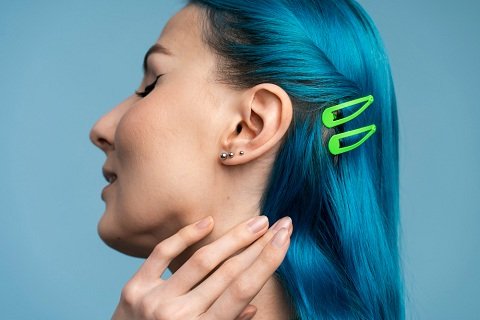





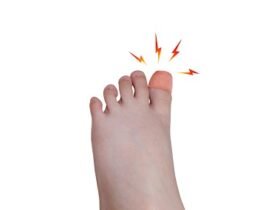
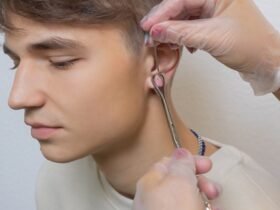
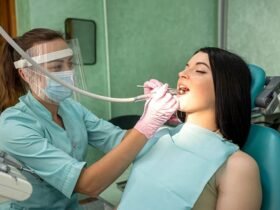
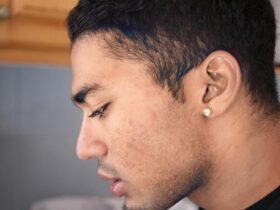
Got a Questions?
Find us on Socials or Contact us and we’ll get back to you as soon as possible.